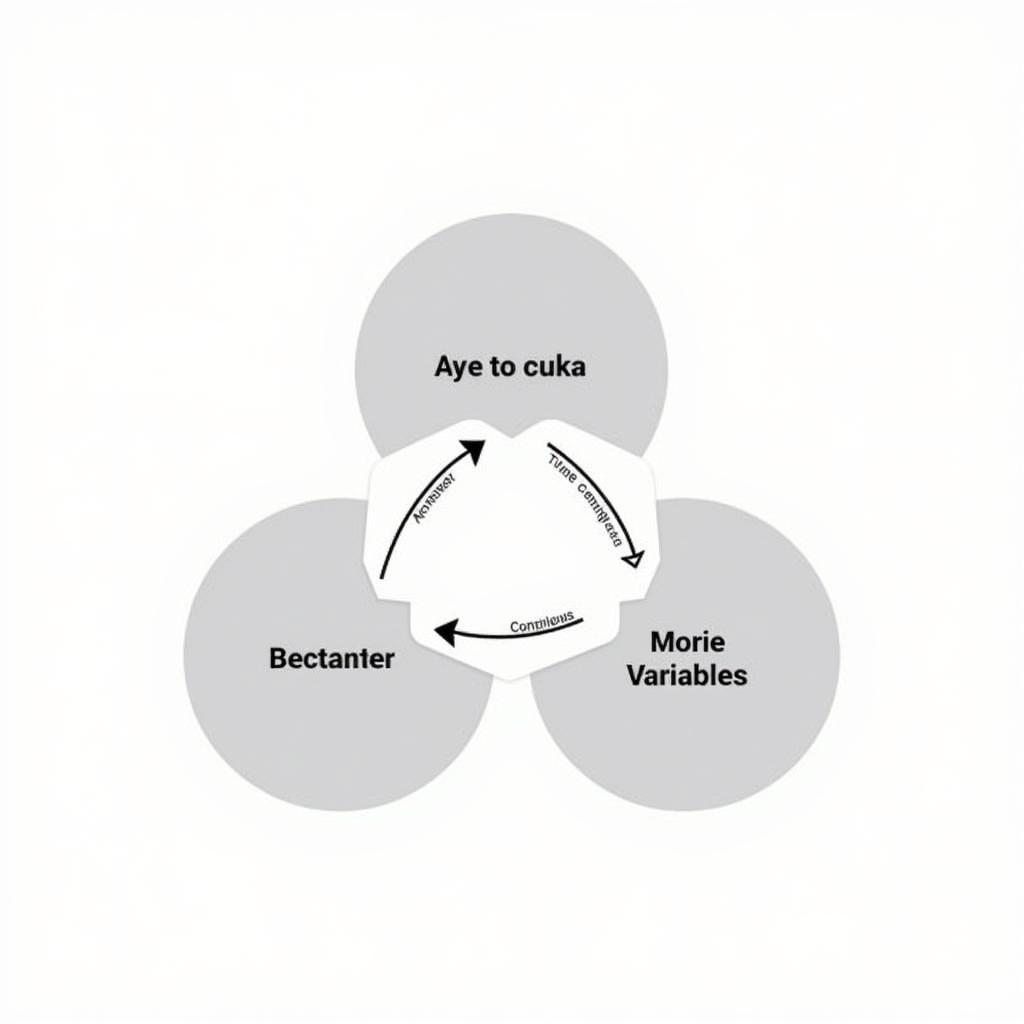The conceptual framework in research is like a blueprint guiding your study. It provides a structure and connects different elements of your research project. By clearly defining key concepts, variables, and their relationships, the conceptual framework helps researchers navigate the complexities of their chosen topic.
 Example of a Conceptual Framework in Research
Example of a Conceptual Framework in Research
Understanding the Importance of a Conceptual Framework
Imagine embarking on a journey without a map or GPS. You might eventually reach your destination, but it would likely involve a lot of wrong turns and wasted time. Similarly, a research project without a conceptual framework can easily veer off course, leading to inconclusive results and a lack of focus.
A well-defined conceptual framework offers numerous benefits:
- Clarity and Focus: It helps researchers define the scope of their study, identify relevant variables, and avoid irrelevant tangents.
- Structure and Organization: It provides a logical structure for the research, ensuring that all parts work together cohesively.
- Hypothesis Development: It guides the formulation of testable hypotheses by suggesting potential relationships between variables.
- Data Analysis: It provides a framework for interpreting and analyzing the collected data.
- Communication: It helps researchers effectively communicate their research design and findings to others.
Building a Strong Conceptual Framework: Key Steps
Creating a robust conceptual framework is an iterative process that involves careful consideration and refinement. Here’s a step-by-step guide:
- Identify Your Research Problem: Clearly define the research question or problem you aim to address. What are you trying to investigate, and what gap in knowledge do you hope to fill?
- Review Existing Literature: Conduct a thorough review of relevant literature to understand the existing theories, models, and empirical findings related to your research topic.
- Identify Key Concepts and Variables: Based on your literature review, pinpoint the key concepts and variables relevant to your research question. Define these concepts clearly and provide operational definitions if necessary.
- Establish Relationships Between Variables: Determine how the identified concepts and variables relate to each other. Are there causal relationships, correlations, or mediating factors?
- Develop a Visual Representation: Create a diagram or visual model to illustrate the relationships between the key concepts and variables. This could be a flowchart, a concept map, or any other suitable visual representation.
- Refine and Revise: The conceptual framework is not set in stone. As you delve deeper into your research, be prepared to refine and revise your framework to accommodate new insights and findings.
 The Process of Developing a Conceptual Framework
The Process of Developing a Conceptual Framework
Conceptual Frameworks in Different Research Approaches
While the fundamental principles remain the same, the application of conceptual frameworks can vary depending on the research approach:
- Quantitative Research: In quantitative research, the conceptual framework often takes the form of a theoretical framework, drawing upon established theories to guide the study.
- Qualitative Research: In qualitative research, the conceptual framework may be more flexible and emergent, evolving alongside data collection and analysis. You can explore this further in our article on what is a conceptual framework in qualitative research.
Common Misconceptions About Conceptual Frameworks
There are some common misunderstandings surrounding conceptual frameworks:
- Confusing Conceptual and Theoretical Frameworks: While related, these are not interchangeable. A theoretical framework is based on existing theories, while a conceptual framework can draw upon various sources, including empirical observations and previous research findings.
- Treating it as a Rigid Structure: The conceptual framework should be viewed as a guide, not a rigid set of rules. Researchers should be open to adapting and refining their framework as their understanding of the topic evolves.
Conclusion
A well-constructed conceptual framework is essential for conducting rigorous and meaningful research. By providing clarity, structure, and direction, it enables researchers to effectively address their research questions and contribute to the body of knowledge in their field. Remember to revisit and refine your conceptual framework as your research progresses, ensuring it remains a valuable tool throughout your study.
FAQ
1. What is the difference between a conceptual framework and a literature review?
A literature review summarizes existing research on a topic, while a conceptual framework synthesizes this information to create a structured representation of the relationships between key concepts and variables.
2. Can I have multiple conceptual frameworks in one research study?
While it’s possible to draw upon multiple theories or models, it’s generally advisable to have one overarching conceptual framework that guides your research.
3. How detailed should my conceptual framework be?
The level of detail depends on the complexity of your research question and the scope of your study. Aim for clarity and conciseness, providing sufficient information to guide your research without overwhelming the reader.
Need help with your research? Contact us at 0904826292, email research@gmail.com, or visit our office at No. 31, Alley 142/7, P. Phú Viên, Bồ Đề, Long Biên, Hà Nội, Việt Nam. Our team is available 24/7 to assist you.